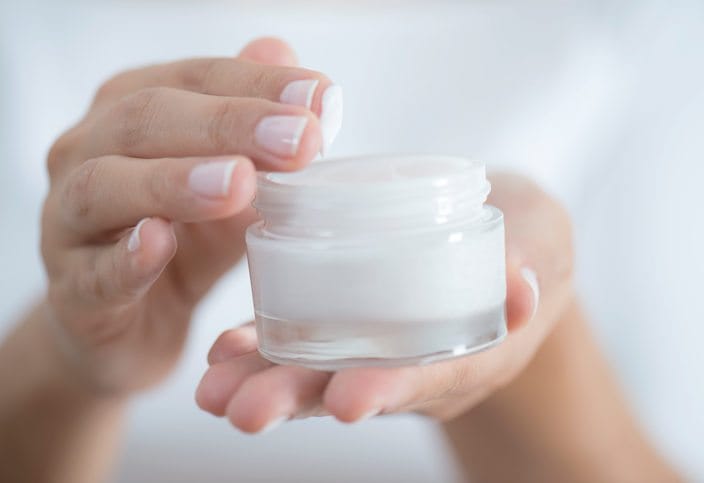The baseball game hadn’t even started when Kishari Sing began to feel that something was seriously wrong. She knew that, like her father, she reacted badly to wine and other types of alcohol; even a small taste of Irish Cream in high school had made her wheeze.
Still, in the parking lot outside the San Diego stadium, her college friends tried to convince Sing that she could build up a tolerance to alcohol, and specifically to their drink of choice – a cheap boxed rosé. She drank one glass and remembers little after that.
“It completely whacked me out. I was sick the entire time,” recounts Sing, now a marketing executive in Los Angeles.
“There’s a photograph of me at the game, and there’s this row of fraternity guys cheering – but I’m all red and puffy and trying to sleep on someone’s shoulder. I was completely incapacitated.”
Fortunately, the reaction to the cheap vino didn’t progress any further – but it was serious enough to keep Sing away from wine for good. “It made me so ill,” she says. “So it really wasn’t worth it.”
Sing is not alone. In fact, roughly 8 percent of people worldwide suffer from allergic-type responses to wine, and even relatively small amounts of the age-old drink can lead to symptoms including redness, itching, swelling, runny nose, headaches and asthma flare-ups.
Some people have true allergic reactions to wine ingredients – in rare cases to the point of anaphylactic shock.
But a study out of Denmark may be the first step in turning those avoiders into connoisseurs who can sip cabernets and chardonnays with impunity. Until now, sulfites – which are used as a preservative in many wines and also can occur naturally – have borne the brunt of the blame for the allergy-related reactions.
Yet only a fraction of people who are sensitive to wine are sensitive to the common preservative. Yeast, tannins and grapes in the vintages are also known to set off allergy symptoms, while histamines and salicylates are linked to intolerance.
The Danish study, published in the Journal of Proteome Research, reveals a completely different potential allergy culprit: glycoproteins. Titled “Glycoproteomic Profile in Wine: A ‘Sweet’ Molecular Renaissance,” the study looks at the molecular makeup of wine – a 2008 Italian Chardonnay to be exact – and identifies 28 glycoproteins (proteins that are coated with sugar during the fermentation process).
Ironically, the study’s lead author Giuseppe Palmisano, who grew up helping his Italian winemaker father pick and press grapes, had not intended to study the potentially allergenic components of wine.
But in the process of analyzing the glycoproteins, and looking at what similarities they shared with other foods, he made the stunning discovery that they have a very similar structure to the proteins in known allergens, including latex, ragweed, bananas, tomatoes and kiwi. Palmisano, who is a post-doc in chemistry at the University of Southern Denmark, was so surprised that he checked and re-checked his data many times.
Once he was certain the data were solid, he was both thrilled and somewhat afraid, since the tiny Italian town where he grew up, along with many others like it, are highly dependent on the wine industry.
Can wine be made
hypoallergenic?
“I was happy because I was putting new light on the molecular composition of wine, and solving another little piece of the complicated puzzle,” says Palmisano. “I was afraid because I wondered what the economic impact could be. But then I realized that people who haven’t experienced any allergy will not be affected by the discovery; but people who do suffer from an allergy can now target a culprit. So there will be no negative economic impact.”
What Causes Your Alcohol Reactions?
But before people with an allergy to wine start dusting off their corkscrews, Palmisano warns that, while the findings will help scientists to understand the chemical link between glycoproteins and certain allergens, clinical trials are needed to discover whether glycoproteins actually trigger reactions. And even then, he believes it may not be possible to eliminate the glycoproteins from the drink.
“The composition of wine is incredibly complex,” he says. “So you can imagine that whenever you remove something, you can never be that selective. If you remove glycoproteins, you will remove other components, which could even be aromatic components – and then you will spoil the wine.”
Others have suggested that genetic modification could in theory be used to rid the wine of the glycoproteins if they are found to be problematic – but Palmisano says that route is fraught with hazards, and that modifying single proteins is extremely difficult, especially for a product such as wine that is mass-produced.
Can a wine be pleasing and allergy-friendly?
Still, Palmisano believes the study could help scientists find a solution that doesn’t alter the grape or the wine, but instead changes the patient. “If we know what these molecules are doing, and what their structures are, we can open our window of opportunity against them,” he says. “So instead of modifying the wine itself, we can build therapeutic interventions.”
Andrew Waterhouse, chair of the Viticulture and Enology Department at the University of California Davis, is more optimistic about actually modifying the wine – while still pleasing the palette. He says that, if glycoproteins prove to be the culprits behind some reactions, they could in theory be removed, making wine tolerable even to those with allergies.
“We don’t currently have specific winemaking methods to affect glycoprotein levels – there has been no call for such procedures – but it would not be hard to create such a procedure,” he says. While Palmisano’s findings only show the similarities between wine glycoproteins and those found in known allergens, and do not yet establish cross-reactivity, Waterhouse still finds this a very exciting lead.
“We do have methods to reduce protein levels, so it may be possible to extend those to glycoprotein.”
From here on, researchers other than Palmisano will have to take the lead, as the scientist plans on returning his attention to his main area of study: the role of glycoproteins in the spread of tumor cells in cancer. Still, he hopes that experts in the allergy field will build on his early findings, and possibly even launch clinical trials.
“In Denmark, we don’t have the infrastructure and the patients to do the follow-up,” says Palmisano, who has received dozens of e-mails and calls from allergists who treat patients with severe reactions to wine, as well as requests for his study. A large European pharmaceutical company is also looking closely at the study.
In the meantime, Kishari Sing says she can wait. She has grown accustomed to a life without alcohol – although her business clients often question why she’s not sharing the wine at lunches and dinners. Still, if science found a way for her to enjoy what some call the nectar of the gods, she wouldn’t say no.
“I sent my friend to a chocolate and wine pairing event, and I was just dying that I couldn’t experience that,” says Sing, a self-professed foodie. “And I’d love to do a wine tasting tour in the Napa Valley, then have a really great multi-course dinner where they serve a different wine with each course, because I spend a lot of time cooking but feel like I’m missing out on half the equation. So that’s the kind of thing I’d love to do.”
See also: What Causes Your Reaction to Alcohol?
© Copyright AGW Media Inc.






